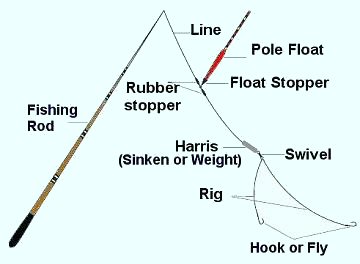
Telescopic Hera rods super-powerful extra-sensitive flexible made of high modulus carbon manufactured in Japan.
4.5 meters Hera rods
5.4 meters Hera rods
6.3 meters Hera rods
How Hera rods are build?
How to attach the float to the line?
How to open and close telescopic Hera rod?
If rod sections get stuck
How to land a fish?
Take a good care of your rod
Hera rod is the most powerful type of pole rod series. "Hera = Herabuna", one of the Japanese
Crucian Carp (Carassius cuvieri), hard fighting fish. Tightly plied high modulus graphite blanks endure even unthinkable hit of carp. Tightly plied high modulus graphite blanks endure even unthinkable hit of carp. This great rod very popular is used at the natural lakes, ponds, and rivers for all kinds of fish. It is finished with chic Japanese traditional "Hera" rod style, known as intermediate painting.
Fishing with Hera rods is fun. You can't even imagine the fun you got when gently move the pole against the fish to strike, ship the line to you, swing the fish to hand, unhook, re-bait and place pole back in the water ready for the next fish. They can be used for small silver fish, or for the hard fighting Carp or Salmon.
Simplicity of a pole fishing

The line is tied to the rod at its tip using the overhand knot on the braid lilian material. Add a line stopper, leaving a 1/8 - 1/4 inch tag to stick out, then girth-hitch a small braid loop on the line between the tip and a stopper. Connect a float to the line attaching it with simple rubber stoppers, put weight between the float and the hook to place the float scale down to the right deep position. That's it, that's all it takes.
How to attach the line to the Hera rod
The line is attached directly to the tip of the rod, using the overhand knot on the braid lilian material connected to the end of the tip. A Guiding Line are used for Hera fishing, usually made of Monofilament or Fluorocarbon, size 0.8 - 1.0mm.
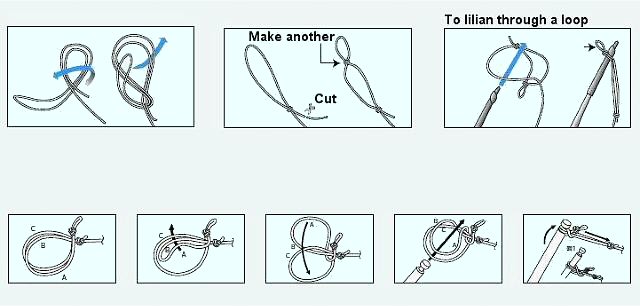
How to attach the float to the line
Rubber float stop is used to keep a float with a guiding line. Every rubber stopor has a certain size that fit with the guiding line.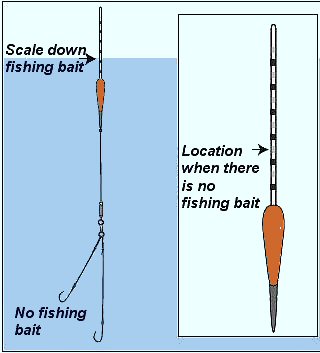
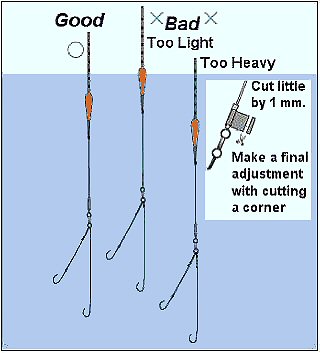
How to roll wooden fish sinker around line


Winding tissue paper or cotton thread around fixed part of the weight.
Crease with a scissor. The width of the crease is around 1.0mm - 1.5mm.
Put guiding fish line in the fold.
Fold it closely by your thum to the roll up tightly and to make "Tune Circle". If you do not fold it closely enough it would be flat shape.
Roll it on a flat surface. If it look "Flat", roll it on flat surface with pushing of hand hood. It help to shape up.
How to connect line with Haris using a swivel.


To prevent 'Interwined", use smaller swivel. Tie guiding line with swivel by clind knot or uni knot. Then set haris. It is always better to use hook connected with haris first. You need to change the haris constantly to get a better result.
Back to top
How to Open Hera Rod.
You should open rod with a special care, always keep control of the rod sections. Hera rods can easily take even very heavy load and don't break while fighting the fish, they are very strong and durable but they need to be handled with cared too. Opening these rods must be done very carefully and gently, no sideway pressure should be applied to the rod. Telescopic Hera rods are very simple to open, but there are a couple of points to keep in mind to simplify the process and avoid damaging the rod:- Remove the plug at the end of the rod and expose the tip of the rod with a lilian string by tilting the rod a little.
- Expose the section with the braided string first and attach the line to the tip.
- Pull the tip and other sections out sliding each part between the fingers. Make sure to open the rod from the tip section to bottom one by one tightly and don't apply any sideway pressure, so the sections can not move when twisted. Extend each section individually and make sure it's snug but not too tight before moving on to the next section. Do not apply too much pressure when pulling sections out as that could cause pieces to get stuck.
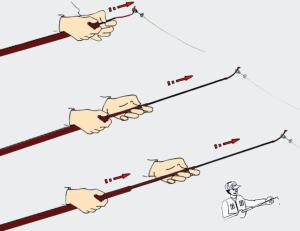
Back to top
How to Close Hera Rod.
You should close the rod with a special care, always keep control of the rod sections. Hera rods usually don't break while fighting even very heavy fish but they could break while they are being closed without special care. Closing these rods must be done very carefully and gently, no sideway pressure should be applied to the rod while closing it.Attention should be paid when drawing in to avoid pulling too forcibly, which may hurt your hand. Draw in the Hera rod from Butt section by turns. If in reverse, the end section may fall into other sections, and maybe cause damage to fishing rod. Bending Hera rod too forcibly or using fishing line when it is in disorder may cause break of fishing rod.
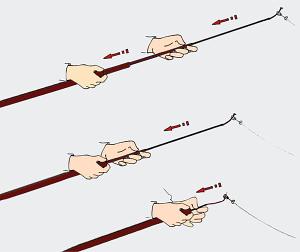
Back to top
If rod sections get stuck:
Occasionally a section may get stuck. The main cause of it is extending the rod too forcibly. Prevention is better than cure: try do not extend the rod too forcibly, try to keep your rod off the ground at all times to avoid dirt getting into the joints. Wipe it clean with a cloth before taking it down so you don't jam dirt into the joint. If you've been using it in saltwater give it a quick rinse with freshwater as soon after use as you can. Its a good idea to put a protectant like WD-40, Tackle Guard or a silicon lube on the joints.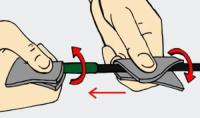

If the hot water technique fails try the next step up. Do the same as above but put ice on the small side of the joint to shrink it. This is easiest if you get some ice from your freezer place it on a cloth or towel and then wrap that around the rod and hold it while you heat the other side with hot water.
Try a penetrating lubricant like WD-40, CRC or Tackle Guard. Leave the joint to soak for an hour or two and then try gently to take the rod down.
You can try to use a penetrating lubricant like WD-40, CRC or Tackle Guard. Leave the joint to soak for an hour or two and then try gently hold the fixed joints and lightly tap the stuck section against the bottom.
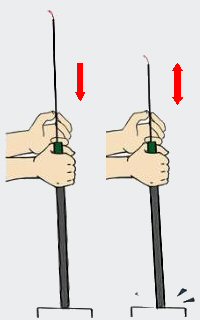
Back to top
How to land a fish.
Needless to say that landing a small fish is very straightforward with Hera rods, just raise it and slide the fish into the landing net range. Catching bigger fish is always a challenge requiring patience and knowledge especially with the light tackle. Of course it's a lot of fun.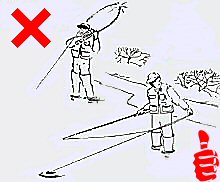
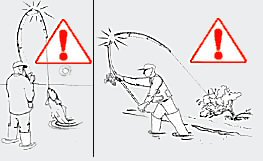
Try to place yourself and rod as lower as you can against the water or ground. Hold the very end of the rod with two hands together. If you don't bring the rod tip up high, most likely you can lose big big ( line breaks) but at least you save the rod.
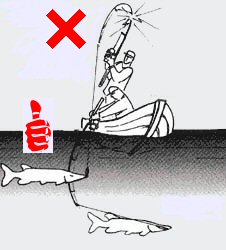
Back to top
Take a good care of your rod.
Rod maintenance has nothing to do with rod breakage. Anglers will always find ways to break their rods, starting from regular (car doors) to very stupid (standing on it) or while fighting a huge fish. What should or should not be done to keep our fishing tackle in good shape and ensure many years of fishing enjoyment?
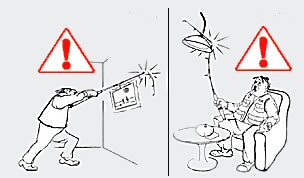

This is one of the most common causes of breakage and is 100% angler-caused
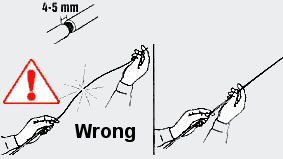

4. Be extra careful when getting your fishing rod out of the car, especially if it is a graphite rod. Too many people break their rod on the car door.
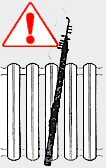
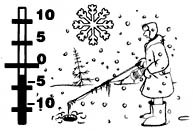
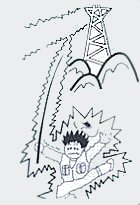
8. If you seal up the damp or sordid fishing rod, the moisture will possibly cause the bubbling or scaling off of lacquer. To prevent this, always rub off the moisture on fishing rod and keep it in a ventilated place. Never store a rod in its tube. Humidity can cause the moisture.
9. Always rub off the moisture, salt and dirt before storage.


Back to top
How Hera rods are build.
Hera rods are composed of materials, such as natural bamboo and fiber reinforced resin, they composed of a plurality of connected rod blanks as one long fishing rod in a put-over joint manner or a spigot joint manner.
The intermediate rod includes a main layer, a weight layer laminated in a certain range in the axial direction as an outer periphery layer of the main layer, and a coating layer laminated on or above the outer periphery of these main layer and weight layer.
The main layer is a layer composed of a laminated prepreg material. Tape-shaped and sheet-shaped prepreg materials in which carbon fiber is impregnated with an epoxy resin can be given as the laminated prepreg material(s). In the tape-shaped prepreg material, the carbon fiber is oriented in the circumferential direction or in the direction that extends at a certain angle relative to the circumferential direction. In the sheet-shaped prepreg material, carbon fiber is oriented in the axial direction.
The weight layer is composed of a prepreg material with high specific gravity, the material in which metal powder such as tungsten is mixed additionally with glass scrim impregnated with an epoxy resin. This prepreg material with high specific gravity has an extent of 500 to 600 g/mm2, and of thickness of 0.100 to 0.150 mm. This material is laminated on the aforementioned main layer in a prescribed axial location.
The coating layer is formed by applying a synthetic resin coating material, such as epoxy resin and urethane resin. The stepped difference between the main layer and the weight layer is canceled by this coating layer.
This material may not be the cheapest but it's the most consistent, gap-free prepreg material available and the price premium for its exceptional quality is more than reasonable. Those rods are lightweight and incredibly strong, thanks to a third generation of medium-high-modulus and high strain-rate graphite. Here is an incomplete list of features of those rods:
- High-modulus/high-strain graphite reinforced graphite construction for improved sensitivity.
- The ultimate in high performance.
- Delivers greater strength without sacrificing fishing performance.
- Created from blanks with weights up to 20% lighter than comparative models.
- Strong, powerful blanks can handle the power to handle trophy fish in a light and tough surf rod.
- Lightweight, incredibly strong and easy to cast.


































